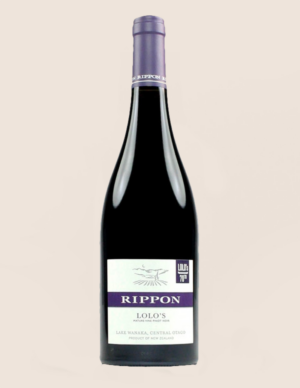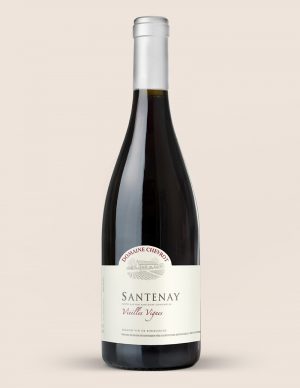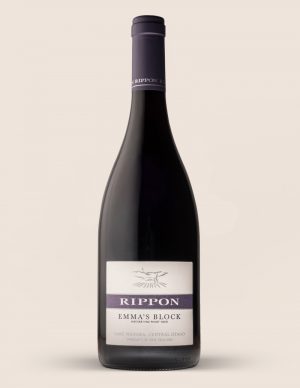
05 Aug Discovering the Dão: Portugal’s Burgundy of the South
Tucked into the mountainous heart of northern Portugal, the Dão Wine Region is a land of ancient vines, dramatic terrain, and elegantly ageworthy wines. With a rich history and a growing reputation for both red and white wines of finesse, the Dão is quietly becoming one of Portugal’s most exciting wine destinations. Let’s explore what makes this region so special.
A Rich and Resilient History
The Dão Wine Region was officially demarcated in 1908, making it one of Portugal’s oldest regulated wine regions. But viticulture here stretches back much further—some believe it predates the formation of Portugal itself. The region gained early fame for its elegant wines, often referred to as the “Burgundy of the South” by 19th-century Parisians, and it even provided wine for Portuguese royalty during the Age of Discovery.
However, the 20th century brought challenges. In the 1940s, a government program forced growers to sell grapes exclusively to cooperatives, stifling quality and innovation. This monopolistic system remained until 1989, when Portugal’s entry into the EU ushered in a revival. Since then, an influx of small producers, modern wineries, and natural wine enthusiasts have helped Dão rediscover its identity—and its wines have never been better.
Grape Varieties: Indigenous Diversity and Historic Styles
The Dão Region is a living museum of Portuguese viticultural heritage, home to dozens of native grape varieties—many of which are found nowhere else. These grapes, shaped by centuries of tradition and terroir, are the backbone of Dão’s stylistic identity. While modern winemaking in the region increasingly highlights single varietals like Touriga Nacional and Encruzado, much of the Dão’s magic lies in the harmony of blends—both planned and accidental.
Red Varieties: Backbone and Balance
- Touriga Nacional, widely considered Portugal’s finest red grape, originated in the Dão. Its hallmark is concentration – of flavour, tannin, and aroma. Expect deep black fruit, florals, and spice.
- Alfrocheiro brings red cherry fruit, juicy acidity, and a supple, silky mouthfeel that tempers Touriga’s intensity.
- Jaen (also known as Mencía across the border in Spain) offers elegance, soft tannins, and a raspberry-like bouquet.
- Tinta Roriz (aka Tempranillo) provides structure and spiced dark fruit.
- Rufete (Tinta Pinheira), Bastardo, and Tinto Cão add character and aromatic lift to blends, especially in old-vine field plots.
White Varieties: Mineral and Ageworthy
- Encruzado, grown almost exclusively in Dão, is the crown jewel of the region’s white grapes. It yields structured, mineral-driven wines that can age for decades.
- Supporting white grapes include Bical, Cercial, and Malvasia Fina, which bring acidity, florals, and subtle orchard fruit.
- Lesser-known varieties like Barcelo, Uva Cão, and Rabo de Ovelha provide further nuance, especially in field blends.
Field Blends: A Legacy in Every Bottle
Field blends – vineyards planted with dozens of grape varieties, harvested and fermented together – are a signature of traditional Dão viticulture. These co-fermented blends may contain 30 to 50 different varieties, both red and white, and represent the DNA of ancient Portuguese winemaking. Wines from these vineyards are texturally complex, elegantly layered, and often defy classification by varietal. Producers like Antonio Madeira and Casa da Passarella are preserving and replanting these precious mixed plots, crafting wines that speak of both soil and memory.
Palhete and Clarete: The Revival of Historic Styles
Two rediscovered wine styles – Palhete and Clarete – are further enriching Dão’s expressive range.
- Palhete is a light-hued red made from the maceration of predominantly red grapes with up to 15% white grapes. Traditionally seen as a rustic table wine, Palhete is enjoying a revival, offering freshness, lower alcohol, and an old-world charm perfect for today’s natural wine lovers.
- Clarete, meanwhile, sits between a rosé and a light red. Made solely from red grapes but with minimal skin contact, it results in a pale, translucent wine that’s aromatic, vibrant, and easy-drinking. Since 2017, regulations allow Clarete to be labeled only if made from red grapes and with no more than 2.5% above the legal minimum alcohol content.
These styles aren’t just novelties – they’re a reconnection with how wine was made in the past, reflecting the Dão Region’s broader renaissance in craftsmanship and respect for tradition.
Terroir: Granite, Altitude, and Freshness
Surrounded by the Serra da Estrela, Caramulo, Nave, and Buçaco mountain ranges, the Dão is a highland valley blessed with granite soils and exceptional natural drainage. Vines grow at elevations ranging from 200 to 900 metres, benefiting from warm days and cool nights. This diurnal shift preserves acidity, resulting in wines that are fresh, structured, and balanced.
The granitic soils are poor in nutrients, forcing vines to dig deep and concentrate flavour. Old vines, many over 100 years old, thrive in this environment, producing low yields and high-quality fruit.
People: Tradition Meets Innovation
The people of the Dão Region are as diverse as the wines they produce. Generations of smallholders have farmed the land for centuries, and today a new wave of independent winemakers is breathing life into forgotten vineyards and lost grape varieties. From heritage estates like Casa da Passarella to innovative producers like Antonio Madeira and Carlos Raposo (in both Vinho Imperfeito and World Wild Wines), these vignerons are blending tradition with modern winemaking – often reviving ancestral methods like foot-treading, fermentation in concrete lagares, and minimal intervention practices.
Food: Rustic and Regional
Dão wines are made for the table. The region’s cuisine is hearty, earthy, and deeply satisfying – think roast suckling pig (leitão), aged sheep’s cheeses like Queijo da Serra, and wild mushroom stews. The structure and freshness of Dão reds cut through rich meats, while the minerality of Encruzado whites pairs beautifully with seafood and creamy cheeses. Traditional fare, simple ingredients, and strong flavours all reflect the soul of the land.
Climate: Warm Summers, Rainy Winters
Dão‘s climate is classified as temperate but shows strong continental traits. The mountains shield the valley from Atlantic and continental extremes, creating a unique microclimate. Winters are cold and wet, with average annual rainfall between 1,200 – 1,300 mm. Summers are hot and dry – ideal for ripening grapes slowly and evenly. Spring frosts remain a concern, but overall the region’s conditions are highly favourable to quality viticulture.
Agriculture: Fragmented Yet Focused
The Dão landscape is a mosaic of pine and eucalyptus forests, granite outcrops, and tiny vineyards – often nestled around vegetable patches on small family plots. While this fragmentation once hindered quality, modern producers have turned it into a strength by embracing low-yield, high-expression farming. Sustainable practices and organic/biodynamic conversions are on the rise, and field blends from old vines are once again highly prized.
Sub-Regions of the Dão: Seven Expressions of a Singular Land
Though the Dão is united by its granite soils, mountainous terrain, and native grape varieties, it is officially divided into seven sub-regions – each with its own unique microclimate, elevation, and stylistic nuances. These sub-regions provide wine lovers with a fascinating spectrum of expressions, from delicate mountain whites to deeply structured reds.
Serra da Estrela
Named after mainland Portugal’s highest mountain range, this is the Dão’s most elevated sub-region. Vineyards here climb up to 800 metres, yielding wines with remarkable freshness, minerality, and ageworthiness. Whites – especially Encruzado – shine with Burgundian finesse, while reds tend to be elegant and finely structured. Producers like Antonio Madeira exemplify the region’s purity and respect for nature.
Alva
This high-altitude area hugs the slopes of the Serra da Estrela and the Alva River. Its extreme diurnal temperature swings help preserve acidity, particularly in white grapes. The soils here mix iron-rich clay, limestone, peat, and sand, giving rise to aromatic, balanced wines. Touriga Nacional and Tinta Roriz dominate the reds, while whites tend to be fragrant and crisp.
Castendo
Located in Silvã de Cima, Castendo is known for its ripeness and vibrancy. Warmer than many other sub-regions, it produces fruit-forward wines with depth and balance. Reds from here often showcase riper fruit tones and rounder textures, offset by the region’s signature acidity.
Terras de Senhorim
This sub-region occupies a fertile and warmer pocket in the southwestern Dão. Wines here are generous in both fruit and structure, with reds leaning toward a broader, richer style. Traditional blends dominate, and the area’s accessibility has attracted both established and experimental winemakers.
Terras de Azurara
Positioned along the Dão River, this sub-region benefits from both river influence and lower elevations, resulting in approachable, fruit-driven wines. It is less known internationally, but increasingly being explored for its value and expressive potential.
Silgueiros
Situated at moderate altitude and benefiting from gentle slopes, Silgueiros offers a balanced climate that produces harmonious wines with moderate tannins and expressive aromatics. Its vineyards are often older, and traditional methods remain strong here.
Besteiros
Though the smallest and least renowned of the sub-regions, Besteiros has potential. Its sheltered position and scattered plantings yield small quantities of wine, often from ancient vines. Wines from Besteiros tend to be rustic and earthy – well suited to lovers of old-world character.
Together, these sub-regions form a mosaic of microclimates and terroirs that make the Dão one of the most diverse and nuanced wine regions in Portugal. As more producers embrace site-specific bottlings, expect to see these names featured more prominently on labels – a cue for drinkers to dive deeper into the heart of Dão.
Wine to Watch: Encruzado & the Antonio Madeira Vinhas Velhas Branco 2020
If there’s one grape to represent the Dão’s potential, it’s Encruzado. Ageworthy, mineral, and refined, this white variety consistently surprises with its depth and elegance.
Among Artisan Wine Online’s Dão offerings, the Antonio Madeira Vinhas Velhas Branco 2020 ($83) stands out. From ancient field-blend vines in the Serra da Estrela subregion, this wine is a masterclass in balance and terroir expression – lush, textured, and long-lived. A must-try for lovers of structured whites and a fitting ambassador for the Dão’s rebirth.
Explore the full range of Dão wines on Artisan Wines Online – including iconic names like Carlos Raposo and Luis Seabra – and taste the revival of Portugal’s most elegant wine region.


 Rippon Pinot Noir 'Lolo's Block' Mature Vine 2019
Rippon Pinot Noir 'Lolo's Block' Mature Vine 2019
 Domaine Chevrot et Fils Santenay Vieilles Vignes Rouge 2021
Domaine Chevrot et Fils Santenay Vieilles Vignes Rouge 2021
 Rippon 'Emma’s Block' Mature Vine Pinot Noir 2016
Rippon 'Emma’s Block' Mature Vine Pinot Noir 2016